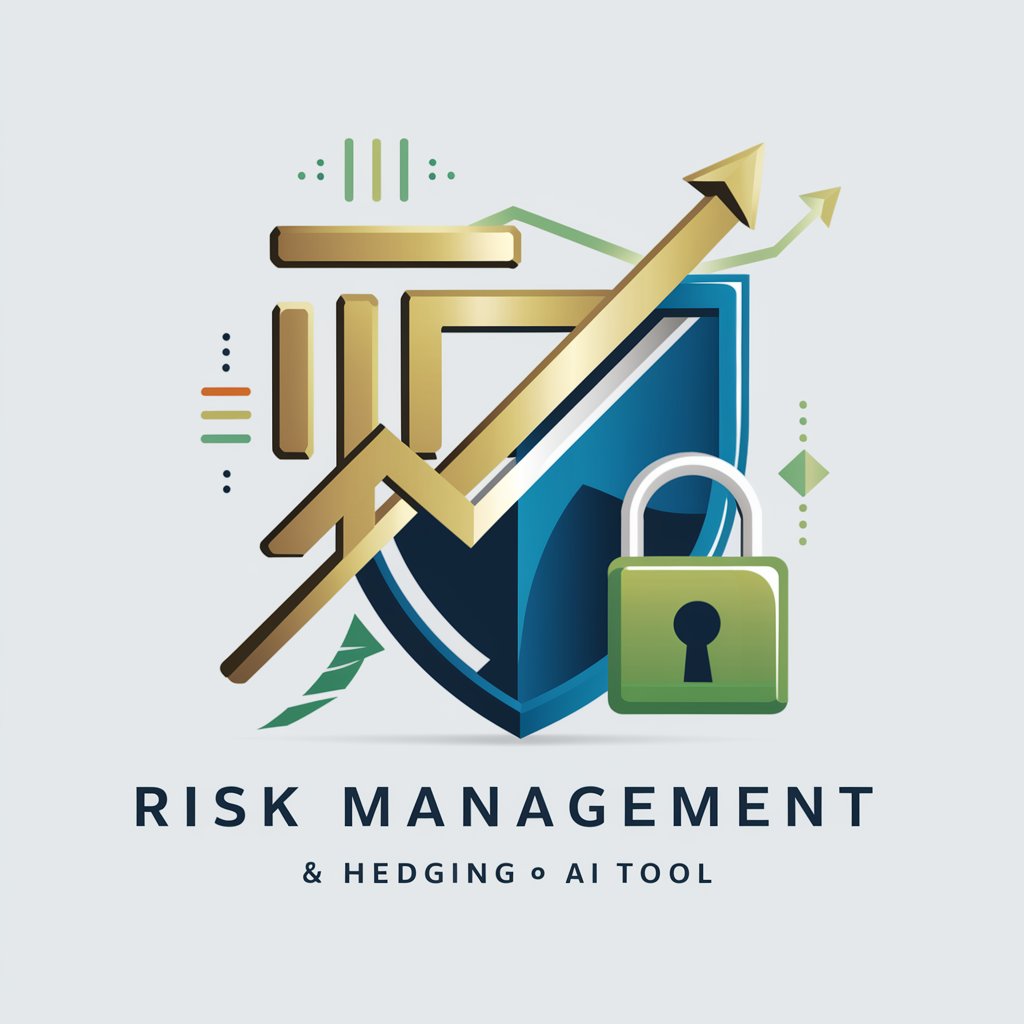Risk Management & Hedging - Risk Mitigation Tools

Welcome to Risk Management & Hedging. Let's secure your financial future.
AI-powered risk management and hedging
Evaluate the risk exposure of my investment portfolio, focusing on...
Recommend hedging strategies to protect against potential market downturns in...
Suggest diversification techniques to reduce risk in my current portfolio, which includes...
Outline a contingency plan for my investments in case of significant market volatility, considering...
Get Embed Code
Understanding Risk Management & Hedging
Risk Management & Hedging encompasses strategies and practices aimed at identifying, assessing, and mitigating financial risks to protect investments. This includes the use of financial instruments like futures, options, and swaps to hedge against potential losses. For instance, an agricultural producer might use futures contracts to lock in a selling price for their crop, protecting against price drops. Similarly, an investor with a portfolio heavy in tech stocks might use options to hedge against sector-specific downturns. The purpose is to ensure stability and minimize the impact of adverse market movements, thereby safeguarding the value of assets under unpredictable conditions. Powered by ChatGPT-4o。

Core Functions of Risk Management & Hedging
Identification and Assessment of Risks
Example
Conducting a portfolio analysis to identify exposure to specific market sectors, interest rate movements, or currency fluctuations.
Scenario
An investor holding significant positions in the energy sector might face high volatility due to fluctuating oil prices. Through risk assessment, the investor identifies the need for a strategy to mitigate potential losses.
Implementation of Hedging Strategies
Example
Using options contracts to protect against a decline in stock value.
Scenario
A portfolio manager anticipates a short-term downturn in the stock market and buys put options for stocks that are over-represented in the portfolio. This strategy provides the right to sell the stocks at a predetermined price, thereby limiting potential losses.
Portfolio Diversification
Example
Incorporating a mix of asset classes with low correlation to reduce risk.
Scenario
An individual investor diversifies their portfolio by adding bonds and real estate investments alongside stocks. This approach helps in buffering the portfolio against market volatility, as different asset classes often move independently of one another.
Continuous Monitoring and Adjustment
Example
Regularly reviewing portfolio performance and market conditions to adjust hedging strategies accordingly.
Scenario
Following significant geopolitical events that could impact market conditions, a risk manager reevaluates the existing hedging positions and adjusts them to better protect the portfolio against newly identified risks.
Who Benefits from Risk Management & Hedging?
Individual Investors
Individuals seeking to protect their personal investments from market fluctuations, inflation, or sector-specific downturns. By using hedging strategies, they can secure their financial goals and retirement plans against unexpected market movements.
Institutional Investors
Entities like pension funds, mutual funds, and insurance companies that manage large portfolios. These investors benefit from risk management to meet their fiduciary responsibilities, ensuring stable returns and capital preservation across varying market conditions.
Corporations
Businesses exposed to risks related to currency exchange rates, interest rates, or commodity prices. Through hedging, corporations can stabilize their cash flows and protect against adverse movements in these factors, ensuring operational and financial stability.
Commodity Producers and Consumers
Agricultural producers, miners, and energy companies, as well as large-scale consumers of these commodities, use futures and options to lock in prices. This strategy protects them against price volatility, securing profit margins and cost structures.

How to Use Risk Management & Hedging
Start Your Journey
Begin by visiting yeschat.ai for a hassle-free trial, where no login or ChatGPT Plus subscription is required.
Identify Your Portfolio
Detail your current investments, including stocks, bonds, and commodities, to get tailored risk management advice.
Define Your Objectives
Clarify your investment horizon, liquidity needs, and biggest financial concerns to focus the risk assessment.
Engage with the Tool
Use the provided guidelines to assess risk, apply hedging techniques, and explore diversification strategies for your portfolio.
Review and Adjust
Regularly monitor your portfolio's performance and adjust your hedging strategies as market conditions change.
Try other advanced and practical GPTs
CELPIP Writing Coach
Elevate Your Writing with AI-Powered Insights

Security Plus 601 Series Preparation
Empower your Security+ prep with AI.

PSPO1 Exam Preparation Buddy
Master Scrum, Pass the PSPO1

DSA Interview Preparation Guide
Master Algorithms with AI

Pre-Law Preparation Tutor
Navigating Law School, Powered by AI

Interview Preparation Assistant
Ace Your Interview with AI Guidance

Looksmaxxing AI
Enhance Your Look with AI

Accademix Quizzer
Empowering study with AI-driven quizzes

Riassunto Accademico
AI-powered academic text summarizer

Max Legge Internazionale e Nazionale
Empowering Legal Decisions with AI

EmpowerMend Counselor
Navigating Recovery with AI

Real Estate Wordsmith
Empowering real estate conversations with AI

Risk Management & Hedging Q&A
What is Risk Management & Hedging?
It's a process of identifying, analyzing, and taking steps to mitigate or offset financial risks in an investment portfolio, using strategies like futures, options, and diversification.
How often should I review my hedging strategy?
Your hedging strategy should be reviewed at least quarterly or anytime there are significant changes in market conditions or in your investment objectives.
Can this tool help with all types of investment portfolios?
Yes, it's designed to assist with a wide range of portfolios, from stocks and bonds to commodities, by providing tailored risk management and hedging advice.
What are the benefits of using Risk Management & Hedging?
It helps in reducing potential financial losses, provides peace of mind by managing uncertainty, and aims to improve portfolio returns over the long term.
How does portfolio diversification help in risk management?
Diversification spreads investments across various assets, industries, and geographies, reducing the impact of a poor performance by any single investment on the overall portfolio.
